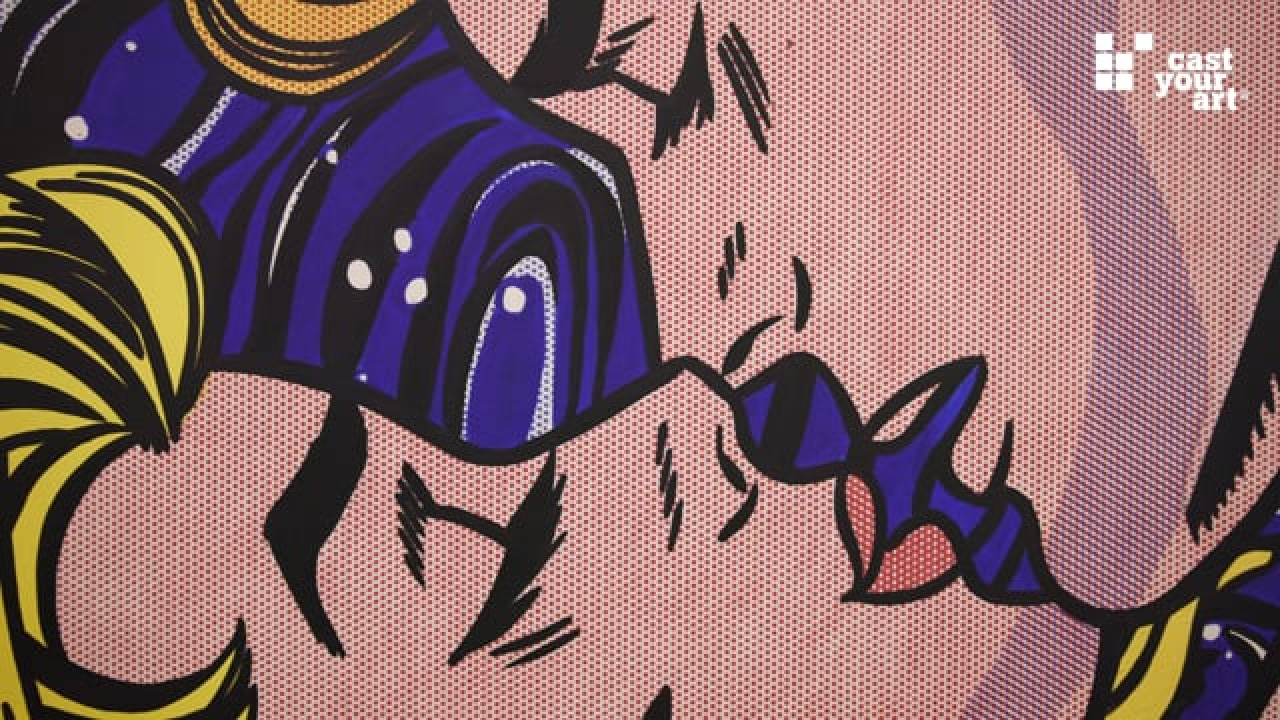Attilio Zanetti - more geometrico
His oeuvre is the essence of a long and to a large extent autonomous artistic process, leading from figurative, expressive metaphoric painting to a kind of condensed, very personal alphabet of geometric shapes. An artist-portrait by Hans-H. Schellenberg.
Attilio Zanetti Righi (* 16.3.1926 Schaffhausen, † 21.5.2011 Zürich), studied from 1948 until 1950 at the Accademia di Belle Arti di Firenze. 1952 Scholarship at the Istituto Svizzero in Rome. 1953, 1954 and 1959 federal Swiss scholarship. From 1948 until 1960 ZanettiRighi lived in Florence, then until 1980 in southern Italy. From the mid-1990ies he lived and worked in Zürich and Rome.
His oeuvre is the essence of a long and to a large extent autonomous artistic process, leading from figurative, expressive metaphoric painting to a kind of condensed, very personal alphabet of geometric shapes.
The narrative and figurative painting of his early days in Rome and Florence with its earthy colours and dramatic figures, and its noticeable influence by antiquity and Pompeian painting eventually made way to the basic shapes of geometry: Circles, straight bars, conic sections, and squares. In the reduced pictorial narrative, Zanetti Righi’s colours are progressively assembled and composed by geometric shapes, angles and lines.
Zanetti Righi seems to aspire for the infinite, by constantly reassembling the finite closed shapes in his paintings. A straight line can be continued to infinity as is the case with the space between two parallel lines. We see forms that have no counterpart in nature but with their outlines they find their echo in the limits of the picture frame. On the other hand they transcend these limits and appear as fragments of a greater cosmos; in a kind of feedback they receive a second imaginary scale that gives an impression of mile-wide spaces between the forms on the canvas.
The basic elements circle, square, triangle, “I split them into parallel repetitions. The colours, I use the fundamental colours in their entirety, I achieve nuances of tone with the varied quantities of the colour patches. The circle is a primary element; it constitutes the movement, often the movement of a pair of balances. My newest paintings are large formats, mural formats, spaces I can enter, architectures I can experience, which give me freedom. My painting moves within space, I see it in large interiors.”
Compared to the expressive and narrative painting of his early oeuvre, constructivist painting got the upper hand with time; Zanetti Righi’s painting approximated the architecture of pure self-contained harmony. The composition of shapes strives for greatest possible harmony, the self-sufficiency of surfaces, in their intimacy they remind of interiors. However, in his geometric vocabulary of shapes there is often a gentle irony by which the visual expectations of the viewer are fooled by modified principles of proportion and pictorial structure.
Zanetti Righi does not draw on the real outside world of things in his abstract work. His work rather challenges the viewer in a special way to deal with the composition of colour, geometric vocabulary of shapes and material and to give sense to the works himself. Within the forms, he seems to try to liberate the energies of living objects by objectifying them in a different manner, by liberating them of their mortality.
By reduction, he tries to dig out and then grab hold of the essential. He finds “the quantities of colours are exciting”, he does not mix them, “wants to have them entirely”. He reduces his colour range to intensively gleaming fundamental colours, or black, white and silver, he loves “electric”, unnatural colours and is fascinated by computer colours, glass colours, or neon colours. “My pictures are like a container for me – I fill them painting, then I empty them painting.” (ca)
Das könnte Sie auch interessieren

ERWIN WURM. Peace & Plenty
6. December 2018
YOSHITOMO NARA. All my little words
24. May 2023
Michael Maier - Witch Kitchen
14. May 2008
EDGAR TEZAK. Project to Infinity
21. February 2022
Götz Valien - Undisguised Seduction
16. September 2009
ROY LICHTENSTEIN. A Centennial Exhibition
27. March 2024
FROM HUNDERTWASSER TO KIEFER. From the Symbol of Freedom to the Shadows of the Past
22. April 2024
